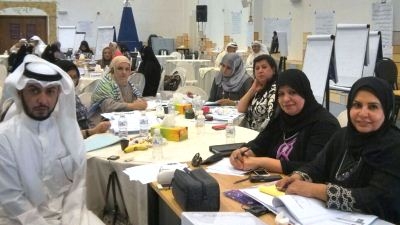Many countries have turned to the World Bank for Reimbursable Advisory Services (RAS). Kuwait’s relationship with the Bank reaches back more than 40 years and represents the best of these.
A modern program of education reform in Kuwait began in 2003 when a Bank team held a Public Expenditure Review. This initial, analytical work recommended establishing national indicator reports and an Education Monitoring and Information System (EMIS) to increase the amount of reliable data, introduce alternative approaches to education budgeting and finance, and strengthen both national and international learning assessments. As the old adage goes, if you don’t measure it, you can’t improve it.
Based on that report, a number of Bank teams carried out projects to strengthen the Kuwaiti Ministry of Education’s (MOE) information systems and involvement in assessments. Collectively, these were the Kuwait Education Indicators and Assessment Project (KEIAP). With those in place, the focus then shifted to improving the quality of general education. For the last four years, a Bank team has assisted the MOE and Kuwait’s National Center for Education Development (NCED) with a series of important quality-related reforms.
The “Integrated Education Reform Program” has student learning as its focus and goes straight to the heart of the things that affect quality education most: curriculum development, teaching and school leadership, strengthening the education center and its assessment capacity, and developing national standards—all important for systemic improvement. A fully Kuwaiti curriculum has been developed by 130 specialists, reflecting national values and concerns. It runs from Kindergarten to Grade 12 in (all) 12 subjects, and is integrated, competence- and standards-based, and child-centered. Complementary documents were developed by education ministry personnel, including a National Curriculum Framework, Implementation and Communications Plans, Operational Guidelines, and Teaching Plans.
New school leadership policies and practices were piloted in 48 schools. These included new job descriptions to define roles and responsibilities for principals, assistant principals, and teaching staff; the addition of a Vice-Principal for Student Affairs for student support services; a new School Improvement Unit for collecting, analyzing, and disseminating students’ achievement data to staff; and a series of regulations and procedures to streamline the governance and functioning of schools.
Strong leadership, and a better environment for leadership, is emphasized. It supports both teaching and learning in three ways: by setting a clear direction for the school; by developing teachers and others to be their most effective; and by making the organization as a whole function well. Teachers were trained to use data for planning, and leadership teams to adopt participatory approaches to planning.


